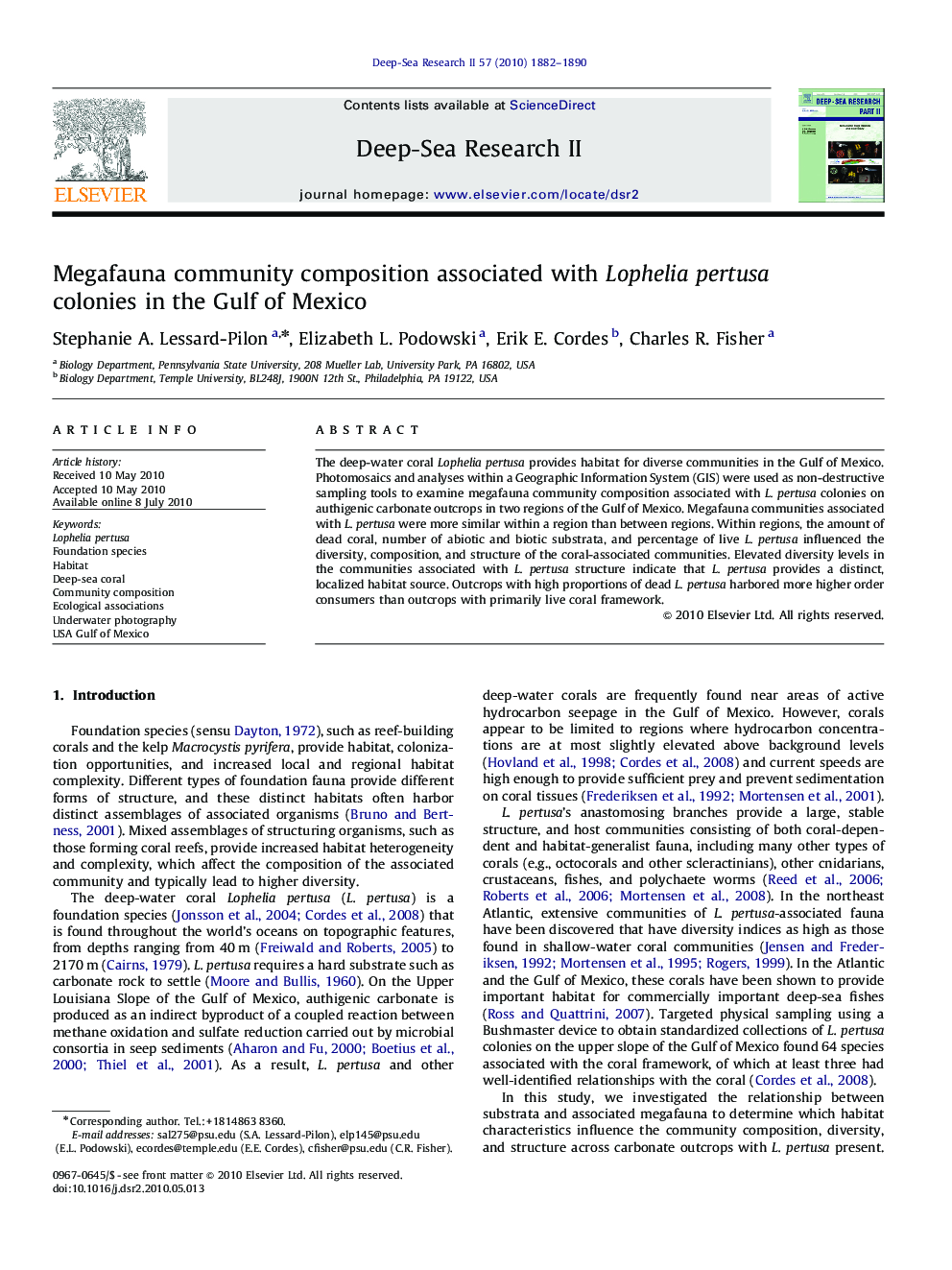| Article ID | Journal | Published Year | Pages | File Type |
|---|---|---|---|---|
| 6384341 | Deep Sea Research Part II: Topical Studies in Oceanography | 2010 | 9 Pages |
The deep-water coral Lophelia pertusa provides habitat for diverse communities in the Gulf of Mexico. Photomosaics and analyses within a Geographic Information System (GIS) were used as non-destructive sampling tools to examine megafauna community composition associated with L. pertusa colonies on authigenic carbonate outcrops in two regions of the Gulf of Mexico. Megafauna communities associated with L. pertusa were more similar within a region than between regions. Within regions, the amount of dead coral, number of abiotic and biotic substrata, and percentage of live L. pertusa influenced the diversity, composition, and structure of the coral-associated communities. Elevated diversity levels in the communities associated with L. pertusa structure indicate that L. pertusa provides a distinct, localized habitat source. Outcrops with high proportions of dead L. pertusa harbored more higher order consumers than outcrops with primarily live coral framework.
